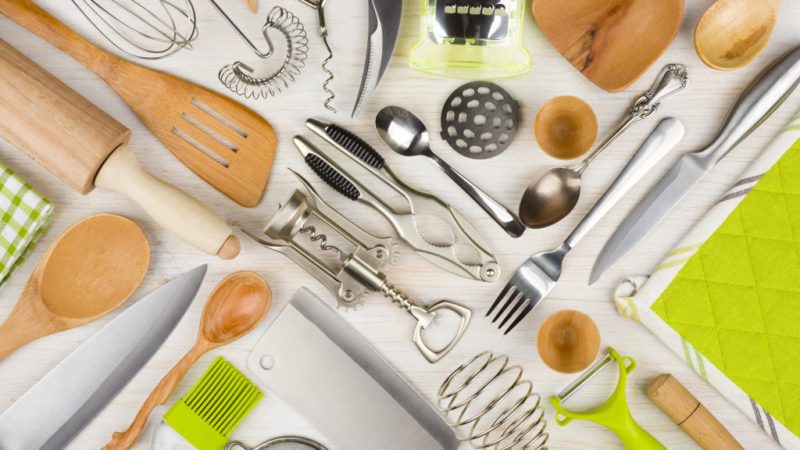
Get rid of kitchen clutter
I think it’s a safe bet that just about every home has a junk drawer. You know, that place you throw things because you can’t figure out where else to put them. Before long, the drawer is overflowing with rolls of tape, bag clips, pens, thumbtacks and other assorted odds and ends. NPR’s Linton Weeks calls them our “accidental time capsule[s].”
While a Moen Consumer and Market Insights Group survey claims that the garage is where Americans stash most of their clutter, the kitchen comes in second, tied with the home office. From stacks of mail to small appliances, respondents complained that their counters resembled their junk drawers.
We took some time to research what organizing experts have to offer by way of tips to unclutter the kitchen. Even if you’re not thinking of selling your home in the near future, these tips will help make life a whole lot easier.
Good clutter vs. bad clutter
The Moen survey finds that there is good clutter and bad clutter. The former includes cutting boards, scrub brushes and, yes, even the random small appliance. Yet professional organizers say that seldom-used kitchen appliances belong in the cupboard, not on the counters. Not only does this create a less cluttered kitchen, but frees up counter space as well.
“Coffee makers are typically used every morning, so it makes sense to have it out all the time,” recommends professional organizer Helena Alkhas. “On the other hand, you may only use your crockpot once a week so the best place to store it is in a cabinet.”
Once you’ve determined what will stay on the counters and what must go, it’s time to devise a decluttering system and Alkhas pares the duration of hers down to 15 minutes.
A place for everything
There is another school of thought, however and that one includes removing everything from every drawer and cupboard, sorting it, disposing of what you never use, storing what you seldom use and placing frequently-used items in an easily accessible spot.
Since we love real estate, cookbook author and pastry chef Alice Medrich’s system especially appeals to us. We also prefer the more relaxed pace of her system and her recommendation to “do it in small bites, an hour at a time, over several weeks.”
In it, she divides the kitchen into three regions:
- The space in the kitchen where you do the most work. This includes the counters and cabinets that are easily reached. Medrich calls this region “prime real estate.”
- The suburbs in your home are those storage areas closest to the kitchen, such as a pantry or closet.
- What we call “rural,” Medrich refers to as the “outlands.” Picture the basement, garage and any cupboards in which you need to stand on something to reach them.
Everything in its place
Although you can begin wherever you choose, Medrich suggests that the prime real estate in the kitchen is best tackled first. You will be able to enjoy the fruits of your labor sooner than if you were to begin in the suburbs or outlands and this instant gratification may help incentivize the rest of the project.
After you’ve cleared everything from the cupboards, begin putting each item away according to how often it’s used. Common sense suggests that seldom-used appliances and gadgets go in the back of cupboards while those items you use more frequently go in the front. Anything that is used annually, such as that huge turkey roasting pan, should be placed in the outlands.
Use storage space wisely
If kitchens sell homes (and they do), pantries sell kitchens. Our buying clients agree that a roomy pantry is a must, but even a smaller one can be put to good use.
Again, break the space within the pantry into zones. These can be anything that makes sense for you but some of the more commonly used by professional organizers include baking, snacks, canned items, breakfast items and pasta and rice. Just as you did with the cupboards, place items you rarely use toward the back of the pantry shelves, allowing easy access to food items you use daily.
Another helpful tip from organizers is to use baskets to keep like items together, such as one for sandwich bags, foil and plastic wrap, another for chips, pretzels and other snacks and a larger one for pet items. Woman’s Day offers up several suggestions to whip the pantry into shape.
When you’ve finished the pantry, consider other clever ways to store frequently-used items that don’t involve stashing them on the counter. House Beautiful, for instance, offers a brilliant idea for storing cutting boards and we love this storage idea from Real Simple for those annoying but useful plastic containers that end up all over the kitchen.
Powered by WPeMatico




Recent Comments